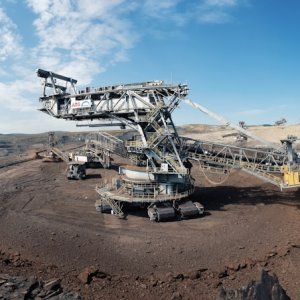
Lack of Exploration, Continuity of Operation
 By Daniel González | Senior Writer -
Mon, 04/26/2021 - 15:11
By Daniel González | Senior Writer -
Mon, 04/26/2021 - 15:11
The Mexican mining industry hopes that for 2021, the best is yet to come. Last year, as a consequence of the COVID-19 pandemic and its impact on the global economy, the mining sector in Mexico attracted only US$2.5 billion in investment, considered the lowest level in 13 years. The future, however, looks brighter.
Six multimillion-dollar projects are expected to start this year. These exploration projects are located in the states of Chihuahua, Durango, Guerrero, Zacatecas and Sonora and will concentrate on producing gold, copper, silver, zinc and lithium. The global companies heading these projects are Torex Gold, Chesapeake Gold, Southern Copper, Bacanora and Fresnillo.
However, exploration, which was once key to the development of the sector, has seen a major decline caused not only by the pandemic, but also by the new policies introduced by the federal government, whose plans are radically different from those of previous administrations. “Mexico has lost attractiveness as a mining investment destination, that is a fact. We have seen a very important reduction in more than 150 exploration companies that are no longer in Mexico and that is worrying,” says Fernando Alanís, President of CAMIMEX, the chamber that groups the main mining companies in the country. “This lack of investment is a future mortgage for the country,” adds Alanís, who has been asking the government for legal and regulatory certainty since the beginning of the COVID-19 crisis. “Mining imports and exports represent 474,000 tons of materials per year. If the mining sector is promoted, other sectors will also grow,” he said at the Mexico Mining Forum 2021 (MMF2021).
On the other side of the spectrum, four of the largest companies operating in the country announced at the beginning of 2021 that they would inject capital for their operations in Mexico after the downturn experienced by the sector the previous year. According to BNAmericas, Southern Copper will increase its CAPEX by US$1.4 billion in 2021 to US$2.9 billion in 2024; Fresnillo will increase its CAPEX by US$565 million, Newmont will inject US$155 million into its Peñasquito mine and Alamos Gold will invest US$135 million in Mulatos.
While exploration projects were at their lowest investment levels in the country’s history, in addition to a world economic recession that put factories in China and Southeast Asia on standby waiting for demand to recover, the Mexican mining industry took advantage of the worst months of the pandemic to revamp some of its operating processes. As a consequence, operational continuity, aimed at maintaining mine production regardless of the economic climate, has become one of the major concerns of the industry in recent months, as it seeks to maximize operations while meeting client demands. Remote operation centers, once associated with digitalization, have become indispensable during the pandemic, as they have enabled many companies to meet their delivery contracts. In addition, these centers directly impact one of the trends that was discussed at the Mexico Mining Forum 2021: security, which has gone from being just another topic on many agendas to being a priority and concern for many operators. The challenges of safety through remote operations require, of course, significant investments not only in the installation and adaptation of the latest technologies and communications, but also in the training, education and space for workers.
Investment in Mexican mining, therefore, will have to deal internal factors that are related to a mine’s jurisdiction. The world economy has lost strength since the 2008 financial crisis, which directly affected metal prices, reaching their highest level in 2011. Since then, prices have trended downward.
In Mexico, two radically different ways of approaching mining were established in that context. Under the Enrique Peña Nieto administration, concessions increased, placing mining as one of the country's most important industries. Since the arrival of President López Obrador, mining policy has generated uncertainties among local and international investors. Add to the mix COVID-19 and Mexico finds itself with an unflattering future, but also one which is full of possibilities, as evidenced by the plans of Fresnillo, Southern Copper, Newmont Gold and Alamos Gold.
To obtain results similar to the pre-pandemic period, financing of mining companies will play a relevant role. The paths to financing are diverse. Small and medium-sized companies have taken advantage of credits from the Fideicomiso de Fomento Minero (Mining Development Trust), a tool that has worked well for these companies. Larger companies, however, continue to seek financing through more traditional mechanisms: loans abroad, placement of international bonds and attraction of capital through the placement of shares.
Today, the mining industry in Mexico is present in 668 communities in 212 municipalities and 24 states. According to INEGI, it represents 8.2 percent of the country's industrial GDP.
















